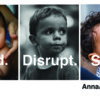Safe families produce successful students and thriving communities. Unfortunately, across our towns and cities, family households are not places where all children are safe.
Instead, children endure adverse childhood experiences—or ACEs. There are ten ACEs that include physical and emotional neglect; physical, emotional and sexual abuse; and living in households where adults misuse substances, have mental health challenges, are violent to partners, parents are separated, or a family member is incarcerated.
Addressing ACEs provides an incredible opportunity to redesign our towns and cities into communities that are not only family-friendly but thrive economically.
For those city leaders eager to generate more prosperity, we have the technology at hand but what defines a family-friendly city?
When we say 'family-friendly' we mean a village, town or urban center where it is easy to:
- Start a family and raise a healthy child
- be a teen who explores the wonders of the world and is safe from all the less-than-healthy temptations
- Benefit from an economically thriving homebase with jobs and support for small businesses and entrepreneurs
To get there, we must first recognize that what we need from our family-friendly cities has changed.
With our mobile devices, we don’t need a physical space to bank, send packages, get a degree, or complete government forms. We can order almost everything we want online so traditional main streets and big malls have lost their purpose and make us wonder if we really need public spaces anyway.
But in our communities, we still seek human interaction. We may not need traditional physical services but we still crave face-to-face contact and a connection to the community around our homes.
To achieve this, we need to rethink how our cities serve parents and children. We need sidewalks for strollers, safe routes to schools, shuttles that can take baby carriages, systems that allow easy online enrollment for early childhood learning programs, and our family-friendly schools need onsite wellness centers to make engaging with medical, mental or dental care easy for both student and parent
To keep our teens safe and healthy, we need bike paths and free shuttles to allow students to safely and easily reach activity centers where teens want to hang out: complete with sports, maker spaces, and educational activities to fill every evening and weekend.
We then provide a clear path to a positive, productive future as teens grow into adulthood. In our family-friendly city, business owners, farmers and artists work together to organize youth to help with community projects and introduce teens to apprenticeships with mentors of all types.
To make a city’s economic engine hum, city leaders and business people come together to identify each region’s assets.
A collaborative approach can lead to economic development that focuses on local talent and innovation year round. As we create a thriving economy, we reduce many of the problems that can lead to childhood trauma.
We have have an opportunity to reinvigorate all our urban and rural centers.
To make this a reality, all us working to prevent ACEs can focus on citywide collaboration to strengthen community systems and lifelong learning to create:
- Safe Childhoods
- Successful Students
- Resilient Families
- Productive Employees
- Healthy Communities
It's time to reach out to all our government, business and foundation leaders and invest in ending the epidemic of childhood trauma. The moment for profound and meaningful progress is here.
You may download our book Anna, Age Eight free-of-charge and learn more about family-friendly, trauma-free cities here: www.annaageeight.org/institute



Comments (0)